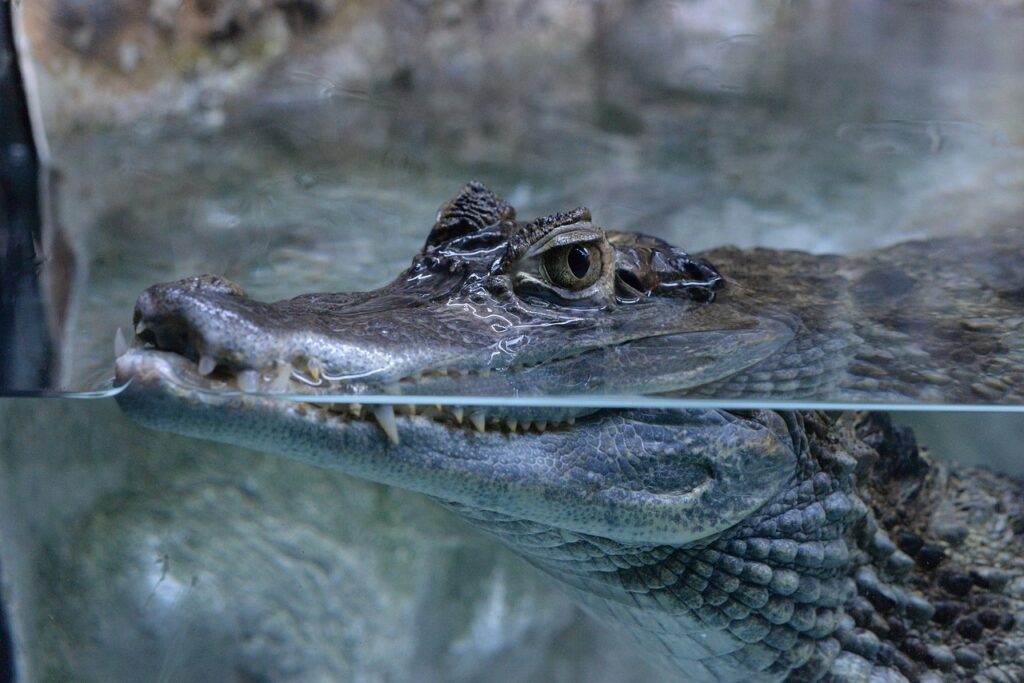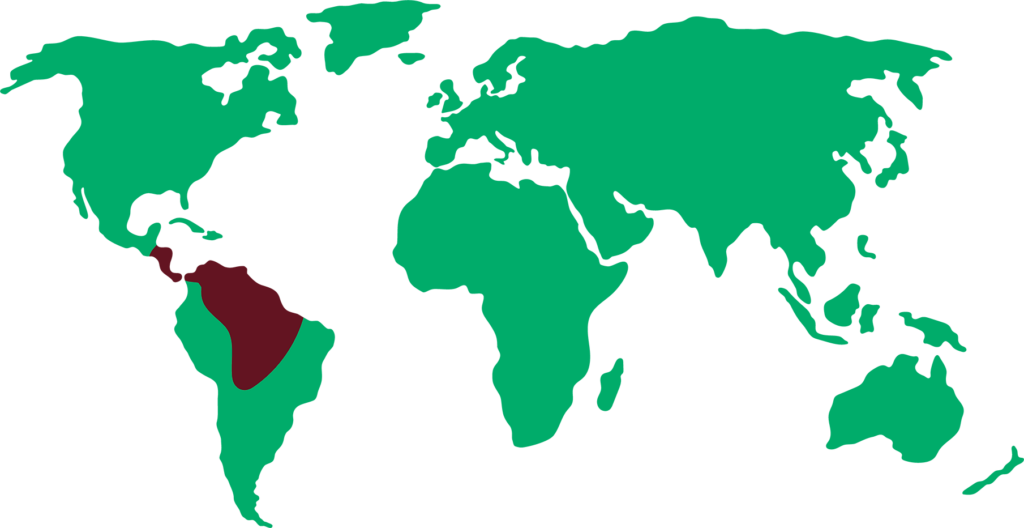SPECTACLED CAIMAN
Caiman crocodilus crocodilus

LENGTH

2 m
WEIGHT

35 kg
LIFESPAN

40 years
The spectacled caiman is one of the smallest species of crocodiles. Its name comes from a bony ridge between the eyes, which gives the appearance of a pair of glasses.
General characteristics
The upper part of the body is mainly brown, greenish or yellowish gray with dark brown cross bands and the lower part is much lighter, closer to a light beige color.
Males are longer and heavier than females. Generally, females grow to no more than 1.5 meters in length while males reach 2 meters.
The skin changes color seasonally: during winter, the black pigment in the cells expands, making the skin appear darker. The eyes are greenish in color and it has several ridges starting from the eyes to the snout, which is long and tapers at the tip.
Feeding
It feeds on different species of animals: crustaceans, fish, amphibians, reptiles, birds and mammals.
Behaviour
Spectacled caimans maintain a territory, but this is loosely defended and they will often tolerate others entering this when there is enough food.
They are diurnal. Most of the day is spent immobile and in the central hours of the day they are completely submerged in the water. In the early morning and midday hours, they sometimes come to the shore to bask in the sun. Some live where the weather is sometimes especially cold at times during the year, but none of them actually become inactive and enter a state of deep sleep (hibernation).
Reproduction
It is usually between May and August, during the wet season. Females build nests, which consist of mounds of dense vegetation, in areas close to water but not at risk of being flooded.
Each female can lay between 15 and 40 eggs in a single clutch and the young hatch after approximately 90 days.
Threats
They are heavily harvested for their skins to make leather products. The pet and curio trade has also had some degree of responsibility for local population declines.
Their populations are still relatively stable in some parts of their range, although they are severely depleted or eradicated in many local areas, especially near human population centers.
Distribution
It is native to northern South America, Central America and certain parts of the Caribbean. They have been introduced into Florida, Cuba and Puerto Rico.
In their native territory they are found in both salt and freshwater areas. They prefer slow moving water areas in rivers, swamps, floodplains and wetlands. They can live in quite shallow bodies of water, needing only enough space to submerge their bodies.

Did you know?
The babies can be males or females depending on the temperature of the incubation.
They can´t tolerate very cold climates.
Only 25% of eggs hatch successfully.
Conservation status
